The most comprehensive prosumer-grade smartwatch that has the tools to help you enhance your fitness, health and wellness.

FEATURES:
- Comprehensive health tracking including: SpO2, stress management and sleep tracking
- Fantastic Infinity Band strap
- Modern design with curved edges, rounded corners
- Good productivity features including reliable speech to text system and Amazon Alexa
- Lightweight, comfortable
I recently received the two new Fitbit smartwatches for review, the Sense and the Fitbit Versa 3.
So, now I have the Fitbit Versa 2, Fitbit Versa 3 and Sense.
In all honesty, I can’t really tell the difference between them, particularly the Fitbit Versa 3 and the Sense.
They have the same Infinity Band, same square watch case and curved edges and no button on the side. Really, besides little minute details, you can’t tell the difference at all.
At least the Fitbit Versa 2 smartwatch has more points of differentiation from the Sense like a different charger, the older band and a physical button.
The Fitbit Versa 3 is a great smartwatch and I would highly recommend that watch. But now that I understand what the Fitbit Versa 3 can do, the question is whether the Sense can beat that.
Contents
- Modern design, cool Infinity Band
- Too many senseless app notifications
- A little rant about linkage reliability
- Texts and emails
- Amazon Alexa
- Health features is what makes the Sense
- Sleep tracking
- Skin temperature sensor
- Great battery life
- Blood oxygen saturation meter (SpO2)
- Workout
- Stress tracking
- EDA scan
- ECG app
- Cool watch faces
- Fitbit Premium
- Verdict
- Update: Jan 2021: Google Assistant integration and phone calls
- FAQ
- Fitbit Sense vs Garmin Fenix 6
- Fitbit Sense vs Polar Grit X
- Fitbit Sense vs Fossil Gen 5 Carlyle
- Fitbit Sense vs Apple Watch Series 6
- Fitbit Sense vs Galaxy Watch3
- Fitbit Sense vs Ticwatch Pro
- Fitbit Sense vs Ticwatch E2/S2/C2
- Fitbit Sense vs Fossil Sport Smartwatch
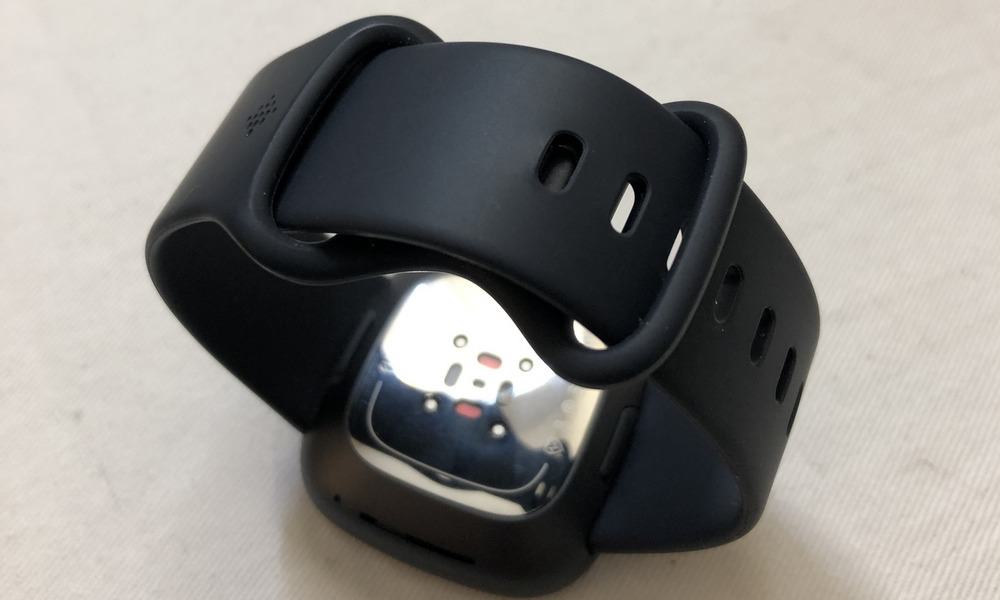
Modern design, cool Infinity Band
The Fitbit Sense has what I would consider a very modern look to it. In a sense, it has a very thin bezel, rounded corners and curved glass.
It also has a rubber-silicone Infinity Band which looks very sporty and youthful. The band doesn’t use a buckle like many other smartwatches. Instead, it uses a band with a pin that you push into one of the notches to lock the length of the strap, and then you slide the rest of the strap into a hole that hides the excess length.
These are pretty rare out there. I can only think of the Apple Watch having a strap like this, and this is even better because there are two loops where you thread the strap into, rather than one on the Apple Watch
With only one loop, like the Apple Watch, the watch hangs precariously until you manage to push the pin into a notch. Then you use the second loop to tick the excess strap length.
With two, it feels a lot more secure because your watch wouldn’t be hanging unsupported. Once you thread the strap through the first loop, you’re able to keep the strap under pressure and hence it’s a lot easier to pin the strap in. The second loop functions the same way as the Apple Watch’s, which is for you to tuck the excess length in.
I really think Fitbit has done the Infinity Band really well. It has become one of my favourite straps out there.
The user interface of the Fitbit is also very modern. The default apps use simple one-colour icons with a modern, if unremarkable, sans serif font. Colours are also saturated to look vibrant.
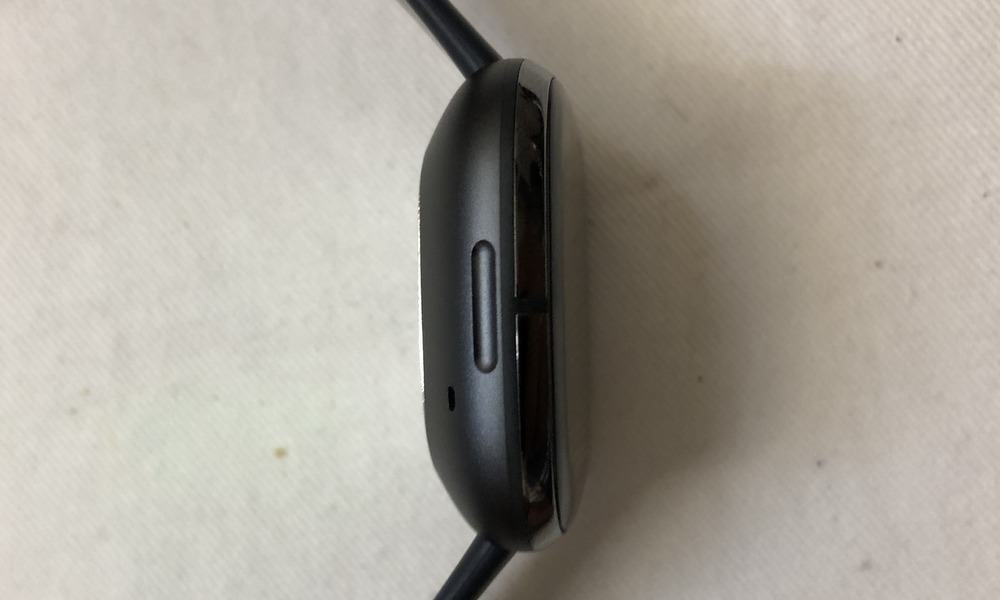
Buttonless design
The Fitbit Sense has no physical button on its left-hand side.
However, there’s a little groove that made me think that it’s one of those cool and modern “virtual” buttons.
Indeed it was and you will sense the haptic feedback if you press it with enough force.
I still prefer the good old days of the Fitbit Versa 2 which had a physical button, though. The feedback from the groove is less distinct that one from a protruding button.
For some reason, the Sense’s button is much more sensitive than the Fitbit Versa 3. So sometimes, I wake up noticing that the Sense has activated Amazon Alexa. I had to disable the long-press mode as a result because having a screen turned on suddenly in the middle of the night is very distracting.
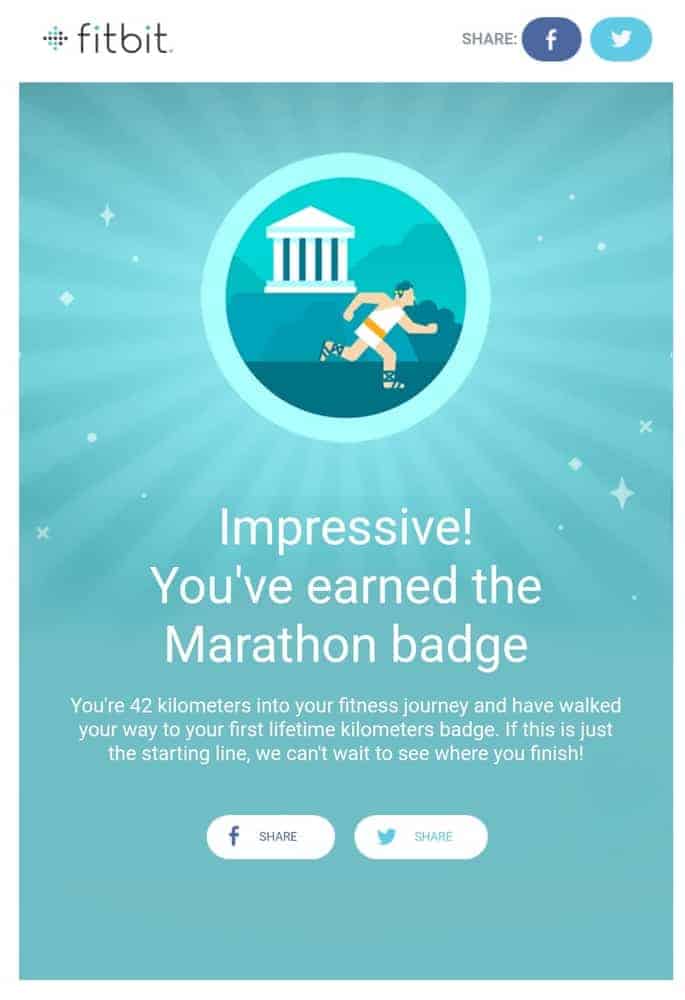
Too many senseless app notifications
The Fitbit Sense can be pretty problematic if you dislike getting notifications. Perhaps every time you get a notification, you will want to react immediately, only to find that it’s Fitbit telling you that you’ve achieved something not very important.
That’s the problem with the Fitbit app. Without disabling the default settings, you will be getting a ton of notification.
Let’s say you achieve something called the “Helicopter” achievement. I got it a while ago for climbing 500 floors. Nice to know, but not very important.
But if you haven’t modified how Fitbit alerts you to these achievements, here’s how annoying it gets.
Your Sense vibrates. You check it. It’s a notification saying that you’ve achieved something.
Your phone vibrates too. Same information.
Then your email pings. Fitbit has sent you an email with the same information.
Wow, do I owe a collections company money?
And then comes… message notifications
Now let’s talk about notifications that are important. On my phones, I have a bunch of messaging tools including Facebook Messenger, WhatsApp and regular texts.
When I first started using the Fitbit app, I didn’t know I had to manually enable certain apps so that I could receive notifications on the Sense.
Which is why, for a while, I always had to check my phone for certain apps’ notifications. Because the Fitbit app disabled them by default.
Luckily, once you rectify this situation, the messaging experience becomes quite pleasant.
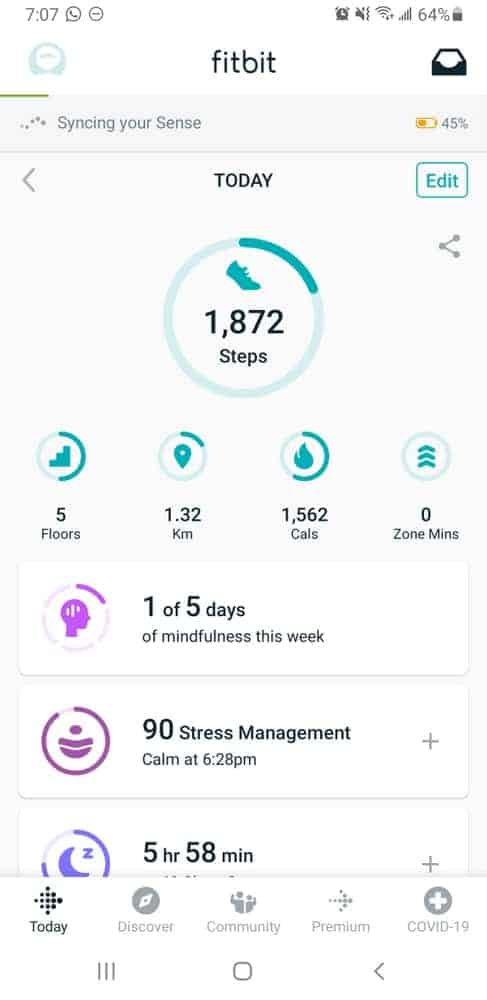
A little rant about linkage reliability
For some reason, I have the worst luck when trying to keep the Sense paired with my smartphone.
I suspect it’s the Fitbit app because I don’t experience the poor reliability in connection quality when I use the Wear OS, Galaxy Wearable (for Samsung smartwatches), Garmin or Suunto apps.
For example, when I first got the Sense, somehow I kept getting a message that I should update my Sense, but I remembered I already updated it when I first turned it on.
Then, there are times when I wanted to use certain features that required the Fitbit app to forward information to the web. Sometimes, those fail.
Usually, a restart will resolve the issue. At other times, you’ll just be left flustered and helpless.
This has the biggest implications for replying to texts and emails. Then it also affects the integrated voice assistant (Amazon’s Amazon Alexa) and also the syncing of your health/lifestyle/workout data.
That said, when it works, the experience is mostly smooth and pleasant, which is most of the time.
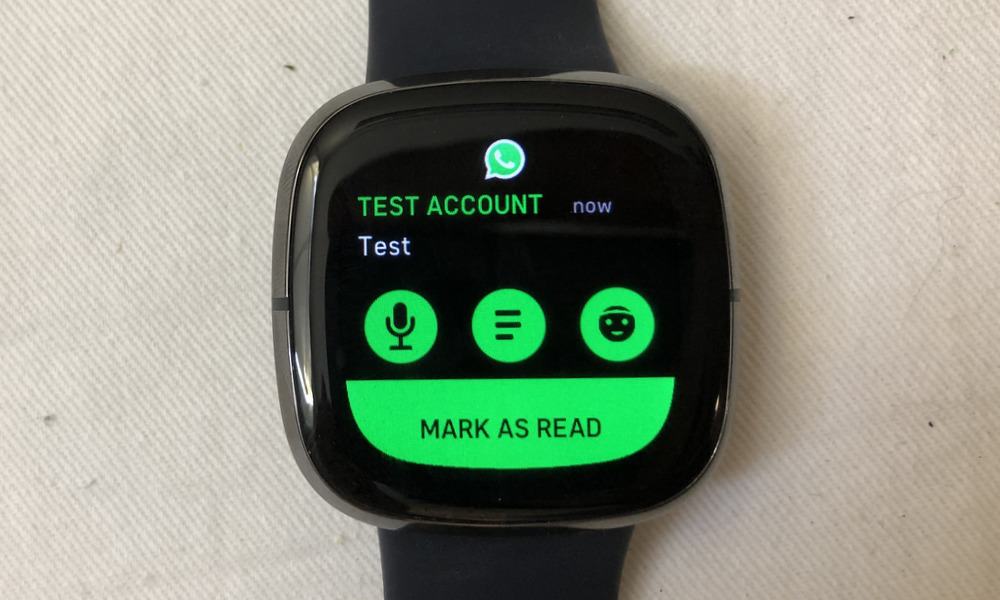
Texts and emails
Texting and emails on the Fitbit Sense is quite a pleasant experience… as long as the link between your Sense and your smartphone works.
When you receive a text or email, you can read a snippet of it. Then you can decide if you want to reply.
You can reply with its speech to text function, send an emoji or use a prepared reply. There are no keyboards on the Sense but I have never found that function to be very convenient, so I don’t miss it.
The transcription quality of the speech to text is good. Short, typical messages that include phrases like the time, a greeting and an acknowledgement would probably be transcribed with good success.
Anything more complicated that includes jargon, slang or other non-typical diction might be a bit harder for the speech to text system.

Amazon Alexa
A voice assistant is very important on a smartwatch because it can save you from many tedious tasks.
For example, if you wanted to start a timer, you could either swipe and tap to achieve this or you could just activate Amazon Alexa and ask it to start a timer.
Amazon Alexa is pretty smart too. You can ask it random questions like “What’s the capital of Chile” and it will tell you the right answer. Or you can ask it to give you the weather of a specific place.
The funny thing, though, is that Amazon Alexa and the rest of the Fitbit Sense feel like two separate environments that have no links to each other.
For example, my weather app tells me the weather where I live and in Celcius. But when I ask Amazon Alexa what the weather is, it gives me the weather in Wilmington, Ohio. I live in Canada, nowhere near Ohio.
If I asked Amazon Alexa for directions, it would also give the distances in miles. I prefer kilometres.
Also, it can’t seem to start workouts. I tried telling Amazon Alexa to “start a walk” and “start a workout” but Amazon Alexa responded with “I don’t know that one.”
If we compare this to other smartwatches, it seems to me that Fitbit’s voice assistant experience is much more disjointed as compared to the experience on the Wear OS, Apple Watch OS and Samsung Tizen OS.
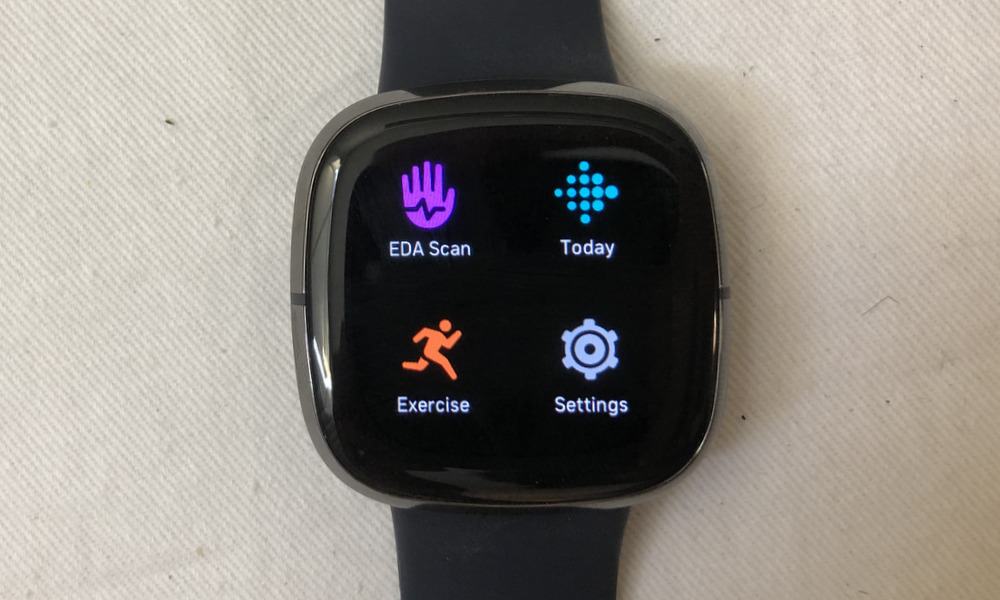
is what makes the Sense
The is one step up from the 3 because it can offer some health and lifestyle metrics not available on the 3.
The cynic in me feels that smartwatch companies are really trying to one-up each other by finding new and metrics that are increasingly less and less impactful to most people. So let’s start with the most impactful ones first…

Sleep tracking
Most new smartwatches that are not Wear OS smartwatches will have some form of sleep tracking feature.
I am also glad to say that the Fitbit Sense is one of the most comfortable smartwatches to sleep while wearing it.
Some smartwatches are just so invasive like the huge Garmin Fenix 6 where if you apply pressure onto the smartwatch, you’ll feel that pressure clamping down on your wrist.
Fortunately, the Fitbit Sense doesn’t have that problem. I still find it weird to wear a watch to bed but the good thing about the Sense is that it doesn’t feel like it’s there. It might come down to its curved bottom which spreads the pressure on your wrist. And it’s very useful to be able to see the time when you wake up in the morning.
What I like about the Fitbit app’s sleep tracking mode is that it looks attractive and can split your sleep zones into awake, light, deep, REM zones.
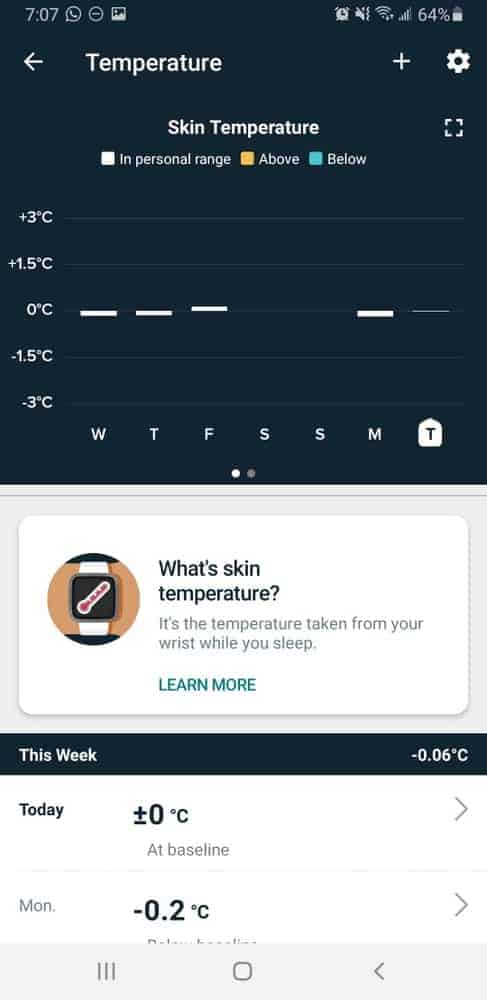
Skin temperature sensor
Am I hot or am I cold?
It’s not Katy Perry judging you. It’s your Fitbit Sense.
But why do I even care when it’s a smartwatch that’s judging me?
Remember by cynicism about new metrics? The body temperature metric captured by the Fitbit Sense is an example.
You sleep with the watch for at least three nights and the Sense gets a baseline temperature reading and tells you whether your skin temperature has increased or decreased from this baseline.
Fitbit’s FAQs on this feature also leads to no useful information as to what it can be used for, but its promo video says that it can help “track potential signs of illness.”
Great
The focus of a has always been geared towards great . The can last half a week with some internal GPS usage. Fitbit can say whatever they want about their watches’ , but I have never found the “up to six days” claim to be true given my use.
My “half a week ” figure comes from having the always on display option turned on and also using the as a workout tracker. In my experience with other watches, those really hurt the . Fitbit also says that answering calls on the watch will reduce your , but that hasn’t been a problem since I haven’t been able to use that feature. Not sure why.
Blood oxygen saturation meter (SpO2)
Another metric that has become all the rage these days is the SpO2 meter that played a central role in Apple Watch Series 6’s marketing push.
It isn’t too prominently featured here, but it’s still a feature that Fitbit wants you to know the Sense has.
The Fitbit Sense records the SpO2 metric as you sleep. When you wake up, it’ll tell you about your blood oxygen saturation data. It will also tell you about the variability of your SpO2 in the app.
Again, this is a metric which is hard for most people to act on. What am I supposed to do if my blood oxygen level is lower than average?
On Fitbit’s website, they say that a change in percentage might indicate “changes in your well-being.”
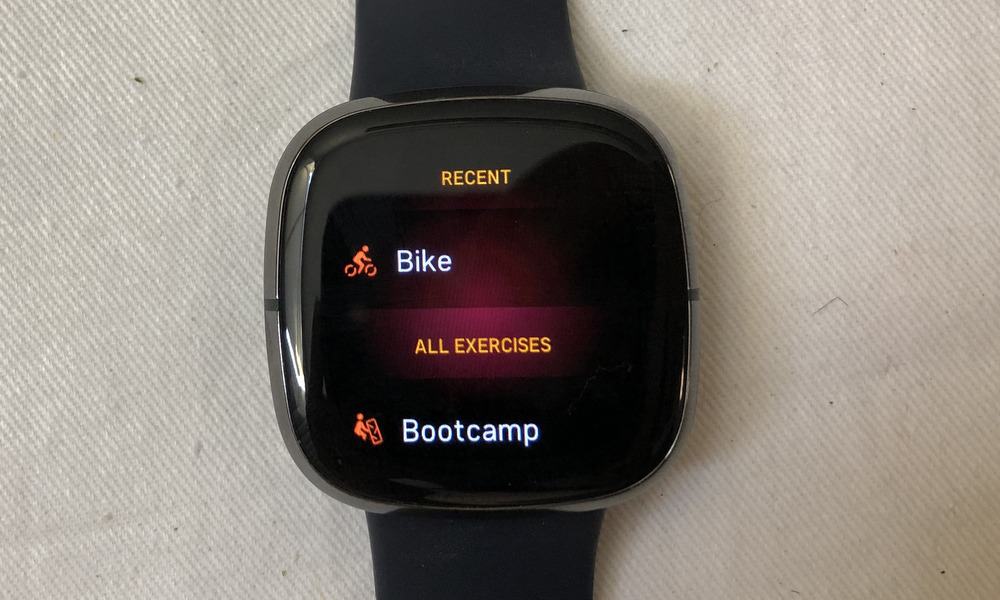
Workout
I like tracking my workouts with the Fitbit. The interface is simple, clean and easy to refer to when you are in the heat of a workout.
That said, you can only get three metrics and switching them requires pressing the virtual button and then swiping. If you are cycling, this would likely mean you will have to stop.
Nonetheless, Fitbit tries to communicate to you about your heart rate zones through vibrating the smartwatch. If you drop below a certain heart rate zone, you will get one pulse. If you go above, you might get two. Fitbit different ranges into “below zone”, “fat burn”, “cardio” and “peak”.
The other innovation is the idea of Active Zone Minutes, which really helps you gauge whether or not you’re hitting the recommended 75 minutes of intensity or 150 minutes of moderate exercise per week.
What this does is that it gives you two points per minute of higher intensity workout and one for every lower zone.

Stress tracking
Fitbit’s press release from August says that this watch has the “world’s first electrodermal activity.”So what does it do?
Again, it’s not something that I really understand. Fitbit says, “Measuring your EDA responses can help you understand your body’s response to stressors and help you manage your stress.”
OK, so I did a quick session and I got eight responses. My heart rate also increased during this session. So does it mean that through this session, I felt more stressed?
The stress scores that I got are pretty interesting. They are the culmination of three metrics: responsiveness, exertion balance and sleep patterns.
Responsiveness looks at your heart rate and looks for changes. Exertion balance looks at how much exercise you’re doing against how much your body can take. Sleep patterns tracks your sleep quality and sleep debt over time.
The sleep metric is also easy to understand because it gives you a number which you can then use to compare your past sleeps.
The stress score is more useful in that you know you can modify certain aspects of it if you suddenly see a drop in that number.
But how do you know if you’re stressing yourself out because you’re doing too much exercise or sleeping too poorly? Well, you have to pay for Fitbit Premium.
The feature, with EDA standing for , is something that has become a much more important feature as a result of COVID-19.
The pandemic has really challenged people and you are seeing the result of such an unstable time with the unravelling of more conspiracy theories, more anger and more depression. I am a believer that smartwatches can help improve your life if you use them earnestly.
The has an . They call it the “world’s first in a smartwatch” and in my experience, I have not really seen anything like this on any other smartwatch.
What you do when you do an is that the will ask you to place your palm over the electrical contacts on the perimeter of the smartwatch. Then, you will do some breathing exercises, either through a two minute quick scan or through a guided program of different lengths.
After the session, it will tell you about how your has changed over the mindfulness session that you just did and also tell you about how many EDA responses the detected. The fewer EDA responses, the calmer you are.
The also has an ECG scan feature but this isn’t available in Canada. Unfortunately, some are blocked by watch makers because they don’t pass regulatory requirements in various countries.
The is available in the United States and the United Kingdom among other countries which you can view here: https://www.fitbit.com/global/us/technology/ecg
It should be integrated into the and .
What the does is that it brings ECG technology to your wrist so you can understand your and take note if there are any worrying signs.
The uses a bunch of sensors in the frame and biosensor core on your and the will ask you to place your fingers on the corners so that it can record your signals.
The one use for this feature is to assess for atrial fibrillation (AFib). Fitbit says AFib is a situation where “chambers of the heart contract irregularly, increasing the risk of heart attack, blood clots, stroke and other heart conditions.”
And the allows you to detect signs of irregularity so you can take this information to your doctor. However, this health metric isn’t to be used to diagnose AFib, though. Fitbit also warns that this feature isn’t meant to detect heart attack, blood clots, stroke or other heart conditions and that you should not modify your medication based on the result you get from the .
You can then open your Assessment in the to view your results. It should tell you that you have a normal sinus rhythm if your is normal or else it might tell you that you have AFib or if it can’t assess your , it will tell you that it’s “inconclusive.”
Cool
The default for Fitbits have always been ones that are utilitarian, but I find that Fitbits also have the best third party watch faces.
The default tells you stuff like the number of steps you’ve made, the new and improved ‘s reading of your and your .
You can also download a specific that tells you your level, a data point that is taken straight from the .
I like memes and no other smartwatch has so many memes made into smartwatch watch faces as the Fitbit offers. This is really great and pretty hilarious when I show others how my watch looks like. The might not be compatible with older Fitbit watch faces, but the will let you know and you can still install them regardless.
Fitbit Premium
You do get a trial of Fitbit Premium plan when you buy the watch, but once that’s over, you have to pay a monthly subscription to it in order to access the finer details of every metric.
It’s actually not dissimilar to paywalled news sites. The information is there but you can’t have it unless you pay.
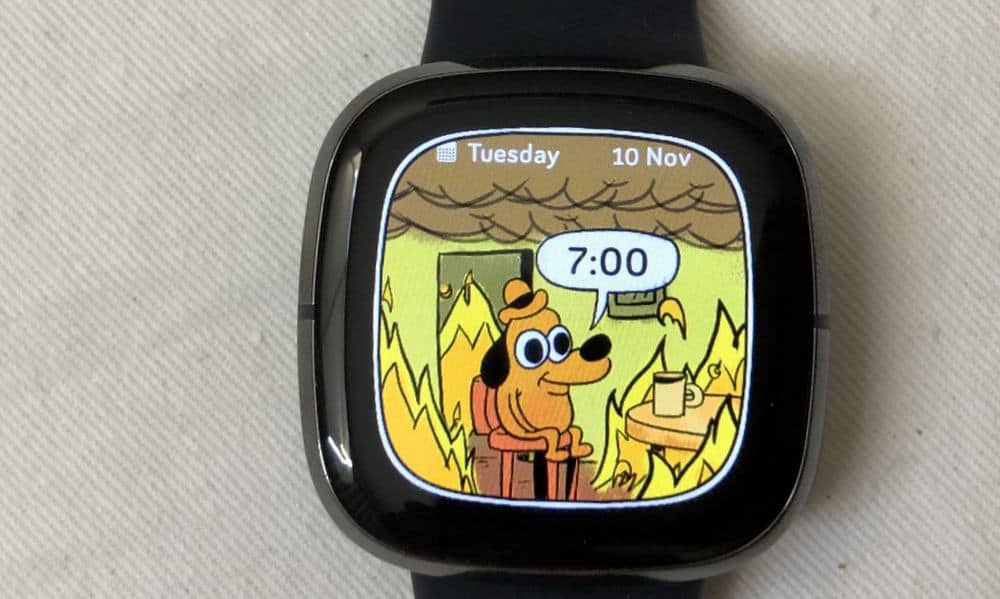
Verdict
The Fitbit Sense takes things to a whole new level. It’s amazing. I love it.
I like how it’s a really comprehensive health, fitness and workout tracking smartwatch. It’s like an on-board diagnostics tool for your body.
I believe if you really put your heart into this watch, you can work towards your goals whether it be exercise more, sleep better or meditate more.
Buy it if you have a goal and you need a tool that will keep track of your progress.
Update: Jan 2021: Google Assistant integration and phone calls
Fitbit has released an update for its Fitbit Sense and Fitbit Versa 3 smartwatches that bring two major changes to the line up. First up, the Fitbit Sense and Fitbit Versa 3 can now accept phone calls. You can’t make phone calls but you can accept calls when you receive them. Second of all, you can now use Google Assistant instead of Alexa, though you have the choice to use one or the other.
I tried using Google Assistant and really liked it. I think it’s a lot better than Alexa. For one, it doesn’t mistakenly think I am in Wilmington, Ohio, and it gives me the temperature in Celcius.
FAQ
Is Fitbit Sense waterproof?
Yes, the Fitbit Sense is waterproof to 50 metres. In fact, almost all smartwatches out there are waterproof enough for swimming.
Is Fitbit Sense compatible with iPhone?
Yes, you will get most features except the ability to reply to messages and emails.
Can Fitbit Sense answer calls?
Apparently, it should be able to. However, in my tests, I haven’t been able to do so. Calls that came in could be accepted or decline but all chatting must be done on your phone directly.
Can Fitbit Sense play music?
Not in most definitions of the phrase “play music.” Let me elaborate.
You won’t be able to play music through its speakers. However, you can control your phone’s music through the Sense Controls.
Or you can load up Spotify and play music through your Bluetooth earphones.
Is Fitbit Sense worth buying?
It’s an overall delightful watch to use and it comes close to a full-featured smartwatch with the exception of it being able to answer calls. Nonetheless, the Fitbit Sense is also one of the smallest and most compact smartwatches out there with a lot to offer, especially if you need a tool to improve your health and lifestyle. It’s the size of a with the power of a full smartwatch.
Fitbit Sense vs Garmin Fenix 6
If the Fitbit Sense and Garmin Fenix 6 were running in a 100m sprint, you’ll find the Sense to be close, but it will lose its steam at the last quarter of the race.
That’s because the Garmin Fenix 6 is such an advanced sport smartwatch that the Fitbit Sense has a hard time competing.
The Garmin Fenix 6 has better battery life, better workout tracking features, ANT+ and Bluetooth connectivity for accessories like power meters and chest heart rate straps. It also has offline maps which I really love when going out in the wild.
On the other hand, the Fitbit Sense offers some semblance of those features at a much lower price. There are also some features that are not available on the Garmin Fenix 6 such as the EDA sensor. The Garmin Fenix 6 doesn’t have the pretty watch faces that the Fitbit Sense has and the Garmin Fenix 6’s price starts at a much higher base price with upgrades like maps and music costing more.
So, if you are a sports enthusiast, or wealthy MAMIL, the Garmin Fenix 6 is an excellent choice. For regular folk, the Fitbit Sense is adequate for most uses.
Fitbit Sense vs Polar Grit X
The Polar Grit X is a truly elite sports smartwatch with fewer features to enhance your productivity. This makes the Fitbit Sense much more attractive.
The Polar Grit X is… polarizing. I like how it’s completely geared towards enhancing your ability to perform. Every screen is meant to tell you about a different aspect of your lifestyle and how it relates to keeping active. Your sleep quality is called “Nightly Recharge” and you get an
At the same time, the Polar OS has some of the worst productivity features. Notifications can become overbearing because the Polar Grit X receives an unfiltered amount of notifications. For example, if you get a Google Maps navigation message (turn left! turn right!), the Polar Grit X will vibrate.
Worse, you can’t reply to the notifications. That’s a problem because almost all smartwatches can reply to them.
Where the Polar Grit X takes health metrics and interprets the data through the lens of “how can we get faster or stronger today?”, the Fitbit Sense takes the data and says, “how can we improve your lifestyle and health today?”
This is probably the biggest distinction between the two. You won’t get a running power reading from the Fitbit Sense, but you get an EDA (stress) scan.
Fitbit Sense vs Fossil Gen 5 Carlyle
These two watches belong more towards the “general purpose smartwatch” category which means the expectations of them are a bit different.
I expect that these watches will enhance my productivity by allowing me to respond quickly to messages and texts. Being able to control music is also nice and having some workout tracking is good.
Both watches fulfill those expectations well with the Fossil Gen 5 Carlyle doing better than the Fitbit Sense on replying to texts and emails. For one, you get different methods of input including a keyboard and handwriting with the Fossil Gen 5 Carlyle’s Wear OS.
Both systems can control your music either through remotely controlling your phone or through apps like Spotify.
The main difference between the two is in the health and lifestyle focus of the Fitbit Sense. The Fitbit Sense puts its focus on enhancing your lifestyle and health. It’s a watch where the focus is squarely on how it can improve your lifestyle and thus, it’s a watch that’s meant to be worn 24/7 so it can collect data on health metrics such as skin temperature and sleep quality.
The Gen 5 isn’t a 24/7 watch, especially since it’s a watch you’d have to charge almost daily but it does come with the Google Fit suite and also some upgrades from Fossil that give you metrics such as cardio fitness and sleep length.
Fitbit Sense vs Apple Watch Series 6
The Apple Watch Series 6 is a great smartwatch that makes me a bit envious.
It’s just so smooth and well designed. Its 40mm version is the smallest smartwatch I know of that has all the features of a premium smartwatch such as a speaker and a battery life that can last 36 hours.
That said, you do need to use an iPhone to use the Apple Watch Series 6.
There’s an argument to getting the Fitbit Sense instead of the Apple Watch Series 6. Remember, Apple doesn’t allow any smartwatch that isn’t theirs to reply to messages or emails, so the Fitbit Sense’s notifications become read-only.
But the Fitbit Sense is cheaper and offers you great health features that closely parallel the Apple Watch Series 6. While it doesn’t have the hearing care feature which warns you about exposure to loud noises, the Fitbit Sense has better sleep quality tracking.
So, in the end, if you care that your smartwatch should help you become more productive, then you should consider the Apple Watch Series 6.
Fitbit Sense vs Galaxy Watch3
If you use a Samsung phone, then you have a very compelling argument for the Galaxy Watch3.
The integration of the Galaxy Watch3 with a Samsung phone is seamless. You get to access your message and email logs as if you were on your phone.
I also have a preference for the Galaxy Watch3’s appearance. It’s solid. It has a rotating bezel. The Fitbit Sense has many modern niceties like rounded edges and a curved display, but it looks like a toy compared to the Galaxy Watch3.
Nonetheless, the Fitbit Sense’s features are far from toy-like. It has features such as the EDA scan which the Galaxy Watch3 doesn’t have. It also gives a more comprehensive view of one’s health as compared to the Galaxy Watch3, although I must say Samsung Health is also very good.
Fitbit Sense vs Ticwatch Pro
If I had to choose between the two, I would go with the Fitbit Sense. The older Ticwatch Pro is just a bit too old and slow for it to compete with the sleek Fitbit Sense.
The good thing about the Ticwatch Pro is that it has a speaker. The Fitbit Sense apparently has one but I haven’t heard it in action yet, and the Ticwatch Pro also comes with Google Assistant, which is much better than the Fitbit Sense’s Alexa (although there’s talk about integrating Google Assistant on the Fitbit Sense).
But yeah, the Fitbit Sense is a superior watch. It’s newer, smoother and lighter.
Fitbit Sense vs Ticwatch E2/S2/C2
The three entry level Ticwatches are great because they are affordable and they have all the best features of a Wear OS watch including a reliable speech to text system, Google Assistant and a big variety of apps.
That said, the Fitbit Sense completely creams these smartwatches in all other aspects. Its a much nicer watch with modern design patterns, it has better battery life and its speech to text system and Alexa voice assistant are competitive. The only thing the Fitbit doesn’t have is a big app store.
Fitbit Sense vs Fossil Sport Smartwatch
I really like the Fossil Sport Smartwatch because it’s very compact.
But I could also say that for the Fitbit Sense, and the Fitbit Sense doesn’t suffer from lag or poor battery life that the Fossil Sport Smartwatch suffers from. The Fitbit’s battery life can last for a few days whereas the Fossil Sport Smartwatch might last for a full day.
Otherwise, the Fossil Sport gives you a good base of features thanks to the Wear OS system. But the battery life is just so bad, the Fitbit Sense just outshines the Fossil Sport Smartwatch very easily.



